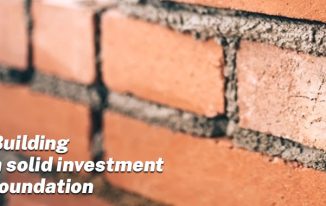In the realm of investments, balancing risk and reward is a crucial aspect of achieving financial security. For investors pursuing high-risk strategies, fixed deposits (FDs) serve as a stabilising component. With guaranteed returns and low risk, FDs complement high-risk investments effectively, creating a diversified portfolio. Understanding how FDs, including those offering attractive FD interest rates for senior citizens, can enhance investment strategies ensures financial stability, even during market volatility. This article explores how fixed deposits can support high-risk strategies while securing returns and mitigating risks.
Why diversification is crucial in investment strategies?
Diversification is a key principle in financial planning. It involves spreading investments across various asset classes to minimise risk. High-risk investments, such as equities or cryptocurrency, offer significant returns but come with the potential for substantial losses. Complementing these with safer options like the best FD ensures a cushion during unfavourable market conditions. By blending low-risk and high-risk instruments, investors can balance their portfolios and achieve consistent growth.
Fixed deposits: A secure financial anchor
Fixed deposits are widely regarded as one of the safest investment options in India. With guaranteed returns and flexibility in tenure, FDs cater to investors across age groups and risk appetites. For senior citizens, FD interest rates for senior citizens are often higher, providing a dependable income source. These deposits ensure that even when high-risk investments falter, a portion of the portfolio remains secure and generates consistent returns.
Key benefits of fixed deposits include guaranteed returns that ensure predictable earnings, flexible tenures ranging from a few months to several years, higher interest rates for senior citizens, and liquidity options tailored for emergencies. These features make FDs an essential part of a stable investment strategy.
High-risk investments: Potential for growth and volatility
High-risk investments, including stocks, mutual funds, and alternative assets, provide the potential for substantial capital appreciation. However, these options are influenced by market fluctuations and economic conditions, making them unpredictable. While these investments can yield impressive gains, they carry the risk of significant losses, especially during downturns. Including the best FD in such a strategy adds an element of security, mitigating the overall risk.
Challenges of high-risk investments include market volatility, lack of guaranteed returns, higher potential for losses, and the need for constant monitoring. These factors underline the importance of combining high-risk options with stable instruments like fixed deposits.
How fixed deposits complement high-risk investments?
Fixed deposits serve as a stabilising force when combined with high-risk investments. They ensure that a portion of your funds grows safely, regardless of market conditions. High-risk investments are prone to volatility, leading to potential losses. Allocating a portion of funds to FDs ensures that your portfolio retains value even during market downturns. The stable returns from FDs, including the best FD options, offset the impact of losses from high-risk assets. For investors nearing retirement or with limited risk tolerance, preserving capital is paramount. FDs, especially those offering FD interest rates for senior citizens, guarantee the safety of principal, enabling better financial planning. Senior citizens and risk-averse investors benefit from the steady income FDs provide. Opting for cumulative or non-cumulative FDs ensures regular payouts or compounding growth, depending on individual requirements. Blending fixed deposits with high-risk assets diversifies your portfolio, reducing dependence on market-linked investments. This approach ensures a balance between stability and growth potential.
Using fixed deposits to create a balanced portfolio
To achieve a balanced portfolio, investors must strategically allocate funds across various instruments. The proportion of funds invested in FDs versus high-risk assets depends on individual financial goals, risk tolerance, and investment horizon. For instance, a sample portfolio allocation might include 30% in fixed deposits for stability, 50% in high-risk investments for growth, and 20% in moderate-risk instruments for balance. This strategy leverages the security of FDs, including the best FD options, to counterbalance the volatility of high-risk investments.
Maximising returns with the best FD options
Investors should evaluate the features and benefits of various FDs to select the most suitable one. Factors like interest rates, tenure, and flexibility determine the returns. Senior citizens, in particular, should explore FD interest rates for senior citizens to maximise earnings. Tips for choosing the best FD include comparing interest rates across banks and NBFCs, opting for reputed financial institutions to ensure safety, choosing the tenure based on financial goals, and checking for additional features like premature withdrawal and loan against FD.
Leveraging FD interest rates for senior citizens
Senior citizens often prioritise financial security and regular income over aggressive growth. Fixed deposits cater to these needs by offering higher interest rates, making them an attractive option for retirees. Choosing FDs with favourable FD interest rates for senior citizens ensures predictable returns and a steady income stream. Moreover, these deposits are an excellent tool for planning retirement funds and covering daily expenses without exposing funds to unnecessary risks.
Tax implications of fixed deposits in India
While FDs offer guaranteed returns, investors must consider their tax implications. Interest earned on FDs is taxable under the Income Tax Act. However, senior citizens enjoy certain benefits, such as deductions under Section 80TTB, which exempts interest income up to ₹50,000 annually. Investors should account for these factors when planning their financial strategies.
Why fixed deposits remain a trusted choice?
Fixed deposits have been a preferred investment option for generations due to their reliability and simplicity. They provide the perfect balance to high-risk investments by ensuring capital safety and predictable returns. Features like competitive interest rates, flexible tenures, and higher FD interest rates for senior citizens make them indispensable in a well-rounded financial strategy. Advantages of fixed deposits include stability during market fluctuations, guaranteed returns for risk-free growth, accessibility with low initial deposits, and tailored options for senior citizens.
Strategies to optimise returns with FDs and high-risk investments
To maximise the benefits of combining FDs with high-risk strategies, consider approaches such as laddering FDs, dividing investments across multiple FDs with varying tenures to maintain liquidity and optimise returns, reinvesting interest through cumulative FDs for compounding growth, regularly reviewing your portfolio to align with financial goals, and matching FD investments with specific goals like retirement or emergency funds, while allocating high-risk investments for long-term wealth creation.
Conclusion
Incorporating fixed deposits into high-risk investment strategies creates a balanced and secure portfolio. By ensuring stability and offering guaranteed returns, FDs act as a financial cushion, especially during market downturns. Senior citizens can further benefit from higher FD interest rates for senior citizens, making FDs an essential tool for income stability. Selecting the best FD options and strategically diversifying across asset classes enables investors to achieve their financial objectives while safeguarding their capital. Combining high-risk investments with fixed deposits is a prudent approach to achieving both growth and financial security.













